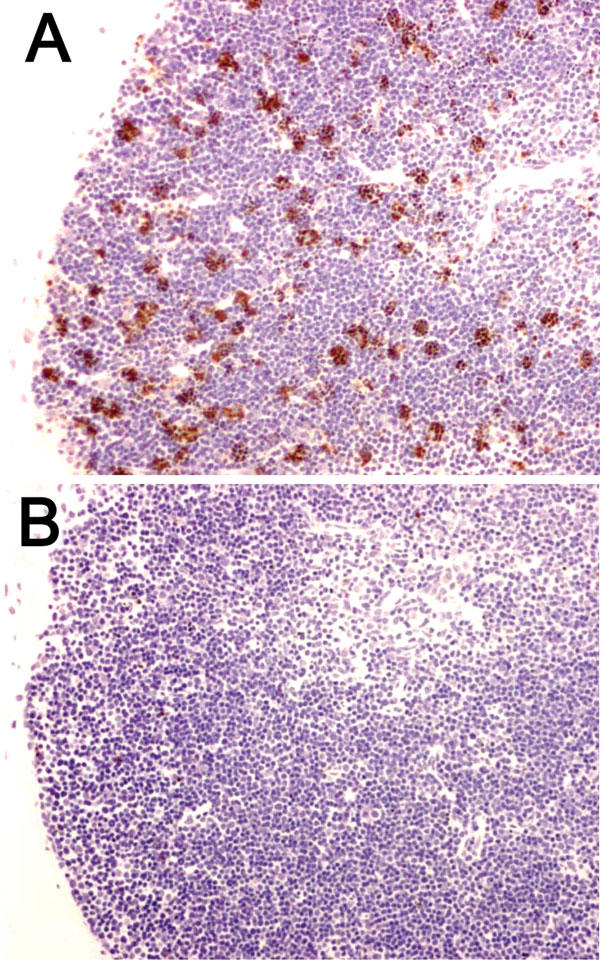Volume 13, Number 2—February 2007
Synopsis
Immune Cell Apoptosis Prevention as Potential Therapy for Severe Infections
Figure 3

Figure 3. Decreased apoptosis caused by overexpression of Bcl-2 protein in a mouse model of plague. Wild-type mice (A) and mice that overexpressed Bcl-2 in lymphocytes (B) were injected intranasally with Yersinia pestis. Thymuses were obtained at 72 h postinfection and stained by using the terminal deoxynucleotidyl method as a marker of apoptotic cell death. Note the decrease in apoptotic cells in the thymus of the Bcl-2 transgenic mouse (magnification ×400).
Page created: June 29, 2010
Page updated: June 29, 2010
Page reviewed: June 29, 2010
The conclusions, findings, and opinions expressed by authors contributing to this journal do not necessarily reflect the official position of the U.S. Department of Health and Human Services, the Public Health Service, the Centers for Disease Control and Prevention, or the authors' affiliated institutions. Use of trade names is for identification only and does not imply endorsement by any of the groups named above.